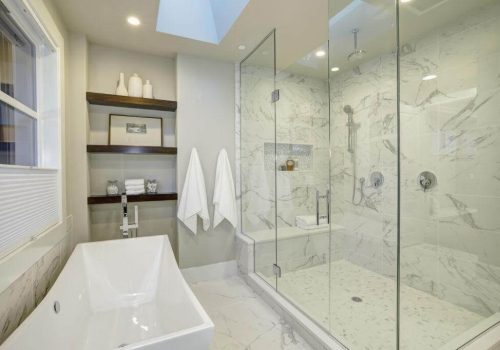Types of Roofing & Attic Ventilations

Proper roofing and attic ventilation are crucial for maintaining the longevity and efficiency of a home’s roof system. With various types of roofing and ventilation options available, choosing the right one ensures optimal airflow, reducing moisture buildup and extending roof life. Whether you’re installing new roofing or upgrading your attic ventilation, roofers in Atlanta offer expert solutions to keep your home safe, energy-efficient, and well-ventilated year-round.
Common Types of Roofing
Regarding roofing, there are several materials and styles to choose from, each offering unique advantages depending on your needs and budget. Here are some of the most popular roofing options:
Asphalt Shingles
Asphalt shingles are one of the most common roofing materials due to their affordability and ease of installation. They come in various colors and styles, making them versatile for different home designs. Asphalt shingles are also durable and can last up to 20-30 years with proper maintenance.
However, their lifespan can be affected by extreme weather conditions, and they may require regular upkeep. For homeowners considering other roofing materials like metal, it’s helpful to learn how they compare. If you’re curious whether metal roofs are noisy, check out this blog.
Metal Roofing
Metal roofing is increasingly popular for its durability, energy efficiency, and longevity. Metal roofs can last up to 50 years or more and are highly resistant to wind, fire, and pests. Their reflective surface also helps reduce energy costs by deflecting heat, making them an excellent option in hot climates.
While metal roofing tends to have a higher upfront cost, its low maintenance requirements and long lifespan make it a cost-effective investment in the long run.
Slate Roofing
Slate roofs are known for their elegant appearance and extreme durability. Slate is a natural stone that can last over 100 years if maintained properly. While expensive, it offers unmatched resistance to fire, moisture, and harsh weather conditions. Slate is ideal for homeowners seeking a high-end, long-lasting roofing option.
However, slate is one of the heaviest roofing materials, so the home’s structure must support its weight.
Tile Roofing
Tile roofing, often made from clay or concrete, offers durability and weather resistance similar to metal and slate roofing. Its traditional aesthetic makes it a popular choice for Mediterranean-style homes. Tiles can last up to 50 years or more, depending on the material and the level of maintenance.
One downside is that tile roofing can be prone to cracking or breaking under impact, such as from heavy debris or foot traffic.
Types of Attic Ventilation
Proper attic ventilation is critical to the health of your roofing system and the overall comfort of your home. Ventilation helps regulate temperature, reducing the risk of moisture damage and extending the lifespan of your roof. Here are the primary types of attic ventilation to consider:
Ridge Vents
Ridge vents are installed along the roof’s peak, allowing hot air to escape from the attic. They are a continuous vent that blends in with the roofline, providing effective ventilation without being visible. Ridge vents are ideal for reducing heat buildup during the summer and preventing moisture-related issues in colder months.
Soffit Vents
Soffit vents are placed under the roof’s eaves and work in conjunction with ridge vents. They allow cool air to enter the attic, creating a natural airflow that pushes warm air through the ridge vents. This balance of intake and exhaust is essential for maintaining proper ventilation.
Gable Vents
Gable vents are typically installed in the gable ends of the roof, allowing air to circulate through the attic space. They are effective in smaller homes or structures where ridge vents may not be feasible. While gable vents provide some ventilation, they may not be as efficient as ridge and soffit vent systems in larger or more complex roofing designs.
Powered Attic Vents
Powered attic vents, or attic fans, use electricity to actively remove hot air from the attic. These are ideal for homes in regions with extreme heat, as they can significantly reduce the temperature in the attic, easing the load on your HVAC system. For a more in-depth look at how proper ventilation can extend the lifespan of your roof, check out this article.
The Importance of Proper Ventilation
Ensuring your attic is well-ventilated can prevent many problems, from moisture damage and mold growth to high energy costs. Poor ventilation can cause your attic to overheat in the summer, leading to higher utility bills as your cooling system works harder to regulate the temperature inside your home. In the winter, trapped moisture can result in mold, mildew, and structural damage to your roof and attic.
Investing in proper ventilation can protect your roofing system and your home’s energy efficiency, saving you money on future repairs and energy bills.
Conclusion
Choosing the right type of roofing and attic ventilation is essential for your home’s longevity, efficiency, and overall health. From durable metal roofing to proper ridge and soffit vents, each element protects your home from damage and ensures a comfortable living environment. For homeowners looking to install or improve their roofing systems, consulting professional roofers is a great way to find solutions tailored to your specific needs.


